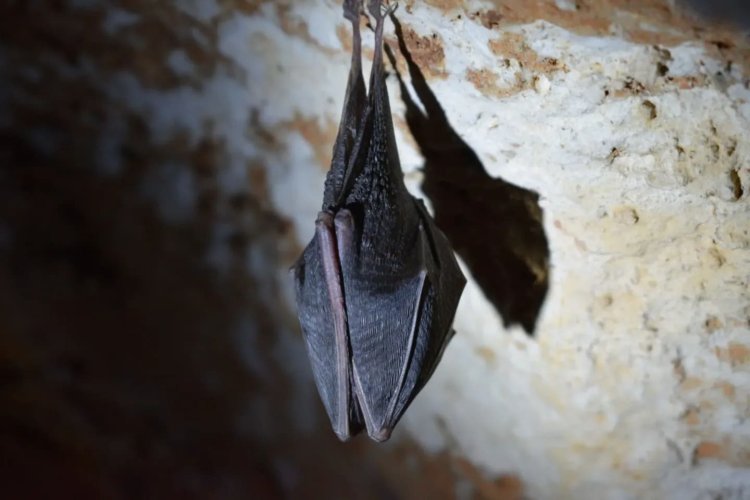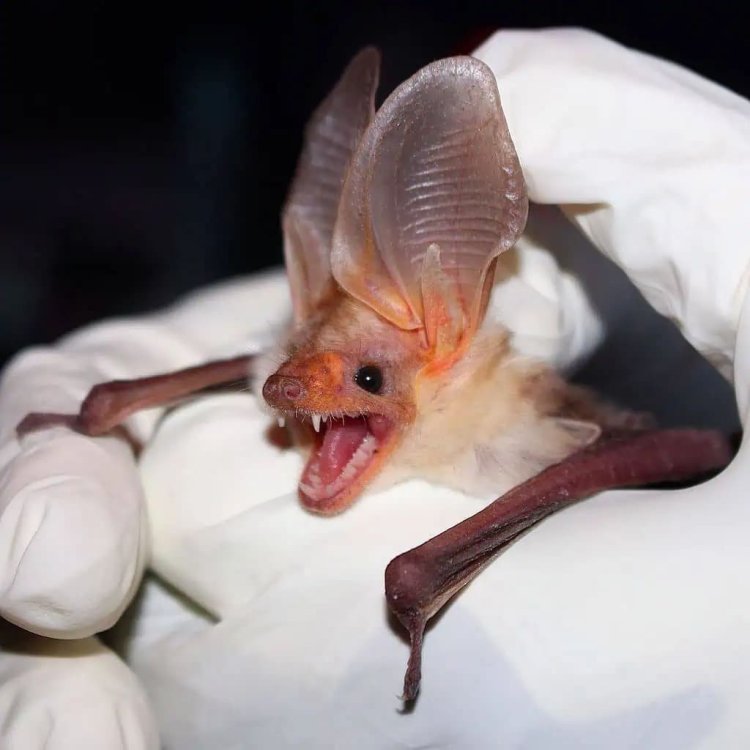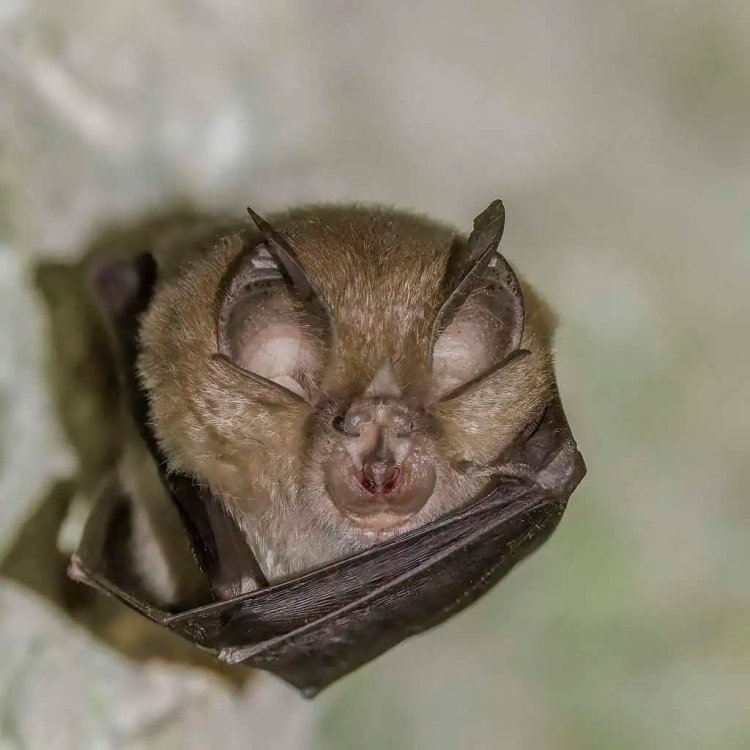Bats Never Get Cancer: The Medical Breakthrough That Could Save Human Lives
Leela Adwani |Jun 24, 2025
Scientists crack the code: Why bats live 30+ years cancer-free while humans struggle with the disease. The answer could change medicine forever.
- Heart-Touching! This Stray Dog Guards Its Injured Friend All Night Till Medical Staff Came To Rescue
- Heart-Melting Moment When Stray Cat Took All Babies To Visit The Woman Who Fed Her
- Left On The Highway, This Dog Walked 60 Km In 26 Days To Reach Home

The Ultimate Medical Mystery: Why Bats Laugh in the Face of Cancer
Picture this: tiny brown bats hanging upside down in dark caves for over 30 years. That's equivalent to 180 human years! Meanwhile, these winged warriors barely ever get cancer. Seriously, what's their secret?
Most mammals live just a few years before diseases knock them down. However, bats are the ultimate biological rebels. They've basically told cancer to take a hike, and scientists are finally figuring out how they pull off this incredible feat.
Scientists Finally Crack the Bat Code
Researchers at the University of Rochester just dropped a bombshell study in Nature Communications. They've decoded exactly how bats never get cancer, despite having biological traits that should make them sitting ducks for the disease.
This isn't just fascinating biology anymore. It's potentially the key to unlocking revolutionary cancer treatments for humans. Talk about a game-changer!

The Cancer Mathematics Don't Add Up (Until Now)
Here's where things get weird. Cancer typically strikes with age because cells accumulate damage over time. Furthermore, humans need three to eight genetic "hits" to develop cancer. Mice, which live shorter lives, only need two hits.
Plot twist: Bats also need just two hits to transform normal cells into cancer cells in lab conditions. Yet, in real life, bats never get cancer. So what's stopping these genetic hits from landing?
Meet p53: The Ultimate Cellular Bodyguard
The answer lies in bats' extraordinary genetic surveillance system. Specifically, the p53 gene acts as the "guardian of the genome." This gene exists in both humans and bats, detecting DNA damage and triggering apoptosis (cellular suicide) to eliminate problematic cells.
Here's the kicker: About 50% of human cancers involve p53 malfunction. Meanwhile, bats don't just have functioning p53 – they have two copies of it! This is extremely rare in nature, previously only seen in elephants.
The Goldilocks Zone of Cellular Defense
Bat cells produce higher levels of p53 protein. Additionally, they control its activity with surgical precision. This creates what researchers call the "Goldilocks zone" – strong enough to eliminate faulty cells, but not so aggressive that it damages healthy ones.
Think of it as having the world's most efficient security system that never has false alarms.
The Immune System That Never Quits
Bats don't stop at superior p53 genes. Moreover, they possess an incredibly fine-tuned immune system that puts humans to shame. While human immunity deteriorates with age, causing chronic inflammation and accelerated aging, bats remain virtually immune to this process.
Their immune cells, including CD8+ T cells and natural killer (NK) cells, work like elite special forces. They constantly patrol for abnormalities, including cancer cells, with ruthless efficiency.
Virus Resistance That Defies Logic
Even more impressively, bats can carry deadly viruses like Ebola and SARS without getting sick. Instead, they become perfect disease carriers while remaining completely healthy. This makes them fascinating subjects for both virology and cancer research.

The Telomerase Paradox
Here's another biological curveball: Bats maintain active telomerase enzyme throughout their lives. This enzyme protects telomeres (chromosome "caps") that normally wear down with age in humans, causing cellular decay.
Theoretically, this should increase cancer risk since telomerase can help cancer cells survive longer. However, once again, the p53 patrol system keeps everything in check, eliminating suspicious cells before they cause trouble.
The Perfect Biological Symphony
The research revealed that bats produce high levels of MDM2 and WRAP53 proteins. These molecules help regulate p53 activity. Together, these factors create a sustainable biological system that allows bats to live long, stay cancer-free, and maintain excellent health despite their tiny body size.
Dr. Vera Gorbunova, one of the study's lead authors, explains: "This complex system allows bats to resist viruses, cellular damage, and age-related diseases. It's the foundation for their remarkable longevity and health."
What This Means for Human Medicine
For humans, this isn't just biological amazement – it's opportunity knocking loudly. Researchers at the University of Rochester believe these bat insights could pave the way for new cancer treatments, anti-aging therapies, and even dangerous virus treatments.
Some existing drugs already target the p53 gene. Consequently, this research could help develop next-generation medications that are more effective and have fewer side effects.
The Future of Medicine Hangs Upside Down
Furthermore, controlling telomerase activity – a controversial topic – might be reconsidered based on bat biology models. If scientists can recreate the bat "Goldilocks mechanism" in human tissues, modern medicine could slow aging, boost cellular resistance, and reduce cancer rates without harsh interventions like chemotherapy or radiation.
This research represents the growing field of comparative oncology. Scientists no longer just look for answers in human genes. Instead, they're learning from extraordinary creatures like naked mole rats, bowhead whales, elephants, and now bats.
The Bottom Line: Nature's Greatest Teachers
Bats never get cancer because they've evolved the ultimate cellular defense system. Their secret lies in perfectly balanced p53 genes, superhuman immune systems, and biological mechanisms that humans can only dream of having.
Most importantly, this breakthrough could revolutionize how we approach cancer treatment and aging. Sometimes the best medical advances come from the most unexpected places – like dark caves where tiny creatures have been outsmarting death for millions of years.
The next time you see a bat, remember: you're looking at nature's cancer-fighting champion. And soon, their secrets might help save human lives.
- Tag






Comments
Sort by Newest | Popular